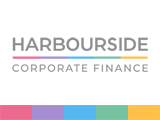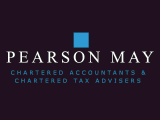The rent-a-room scheme was introduced by the government in 1992 to encourage individuals to take in lodgers by offering them favourable income tax treatment on the rental income received. It cannot be applied to rooms let as an office or otherwise for business purposes. Ordinarily, any rental income received by an individual is taxable income and usually needs to be reported on a Tax Return. It may also give rise to an income tax liability. Here Pearson May partner Jacqui Bowden explains more.
To qualify for rent-a-room relief, the individual must receive rent (and/or payment for goods and services such as meals, cleaning, laundry) in respect of the accommodation. The rent must be accrued to the individual during the tax year and be otherwise chargeable to tax as property income. (There are instances where payments from a lodger can be considered to be trading income and may qualify for rent-a-room relief, but this is unusual and beyond the scope of this article).
The accommodation must
· be furnished
· in the UK
· the individual’s only or main residence for at least part of the tax year
If you are exclusively entitled to the rent and the rent you receive is less than the threshold (see below), then the tax exemption is automatic and you don’t need to do anything. Otherwise you may be required to complete a Tax Return including UK property pages.
The rent-a-room scheme means that the rental income received from a lodger (or lodgers), up to the prescribed limit, can be exempt from income tax. The threshold is £7,500, so if the total amount of rent received in the tax year (before deducting any expenses that the individual has incurred in providing the accommodation) is £7,500 or less, the whole of the income is automatically exempt from tax.
It is worth noting that this limit will be halved if another person is also entitled to the income e.g. if a husband and wife own their home jointly and receive rent from a lodger, the limit is halved to £3,750 each (even if the income is not split equally between them). It is also important to note that for 2017/18 income and expenses are accounted for on a ‘cash basis’ (i.e. recognised when they are received/paid) rather than on an accruals basis. The cash basis now applies automatically unless an individual elects for it not to apply.
It is important to note that the rent-a-room scheme is optional. If using the ‘normal’ principles for working out the profit/loss made on any rental income gives a preferable result, then an individual can elect to use this approach instead. This is probably best explained by way of a couple of examples.
Let’s assume that Sue receives rental income from a lodger in the 2017/18 tax year of £400 per month (£4,800 per annum) and incurs costs of £2,000 per annum in providing that accommodation (e.g. increased heat and light costs, council tax, insurance etc.). As the ‘gross rents’ of £4,800 are less than £7,500, the total £4,800 received is exempt from income tax under the rent-a-room scheme so Sue would be wise to use the rent-a-room relief for the 2017/18 tax year (in this situation it would apply automatically, assuming Sue does not complete a Tax Return, as the gross rents are less than the limit).
If, on the other hand, her annual costs of providing the accommodation were £5,000, Sue would probably be better to not use the rent-a-room relief as she has in fact incurred a loss of £200 in renting out part of her residence so if she completes a Tax Return and claims that loss, it can be carried forward and set against any future rental income received from the same property business.
Let’s now consider John, who receives rental income of £700 per month (£8,400 per annum) from his lodger in his central London residence. With the limit of £7,500, John would almost certainly be better to claim the rent-a-room relief, which would leave him with £900 of taxable rental income. It would only be beneficial for him to use the ‘normal’ principles of calculating the rental profit/loss if the actual expenses he incurred in providing the accommodation exceeded £7,500 for the year.
You can change between claiming rent-a-room or paying tax on your actual profits (i.e. receipts less expenses) from year to year.
Where the property is subsequently sold and you have been letting a room then the amount of private residence relief should not be affected by taking in a lodger. However, if you have taken in more than one lodger at a time or otherwise let out all or part of your home then you may have capital gains tax to pay when the property is sold.
It is worth bearing in mind that HM Revenue & Customs is in the process of reviewing the design of the rent-a-room scheme since there are concerns that homeowners/landlords are using the relief for ‘Airbnb’ arrangements and therefore benefitting from the exemption, whereas ‘normal’ B&Bs would not of course be able to.
HMRC states that it was never the intention that the relief should apply to B&B type arrangements, so it could be that we will see changes to the rent-a-room scheme in the not-too-distant future possibly restricting relief to longer-term lets of 31 days or more.
The above is for general guidance only and no action should be taken without obtaining specific advice.



















